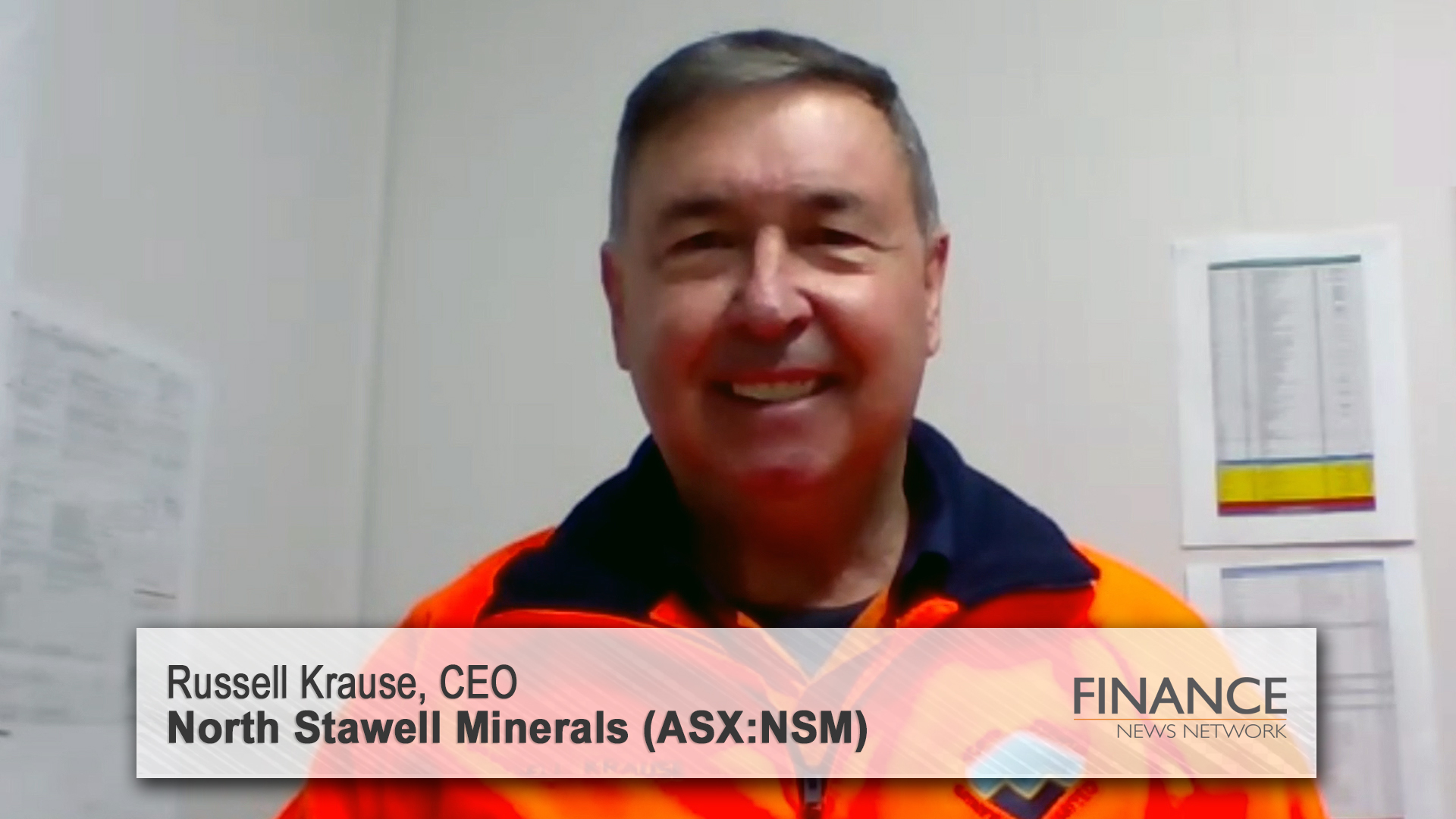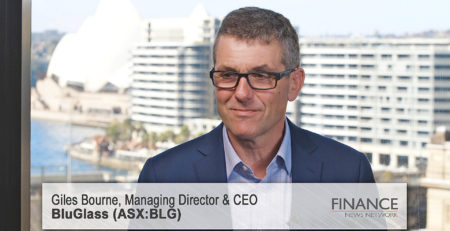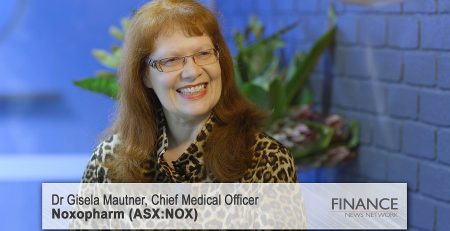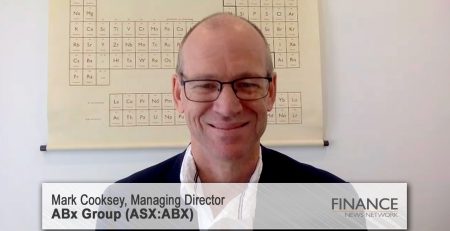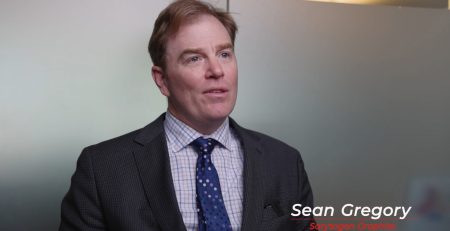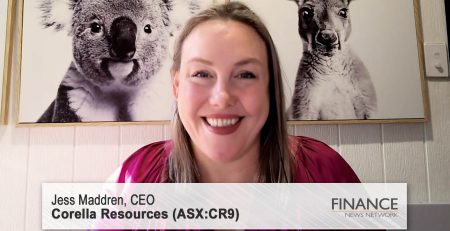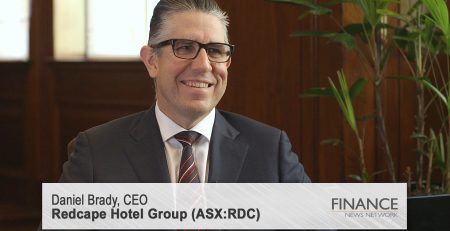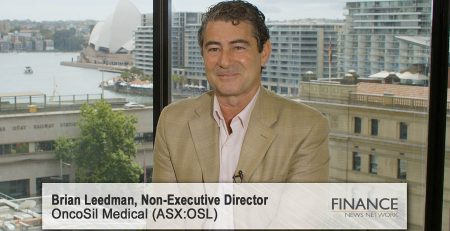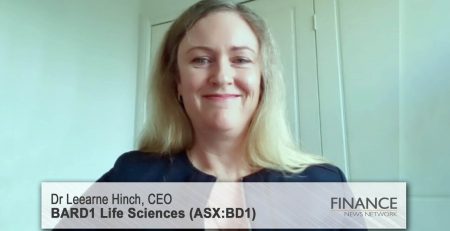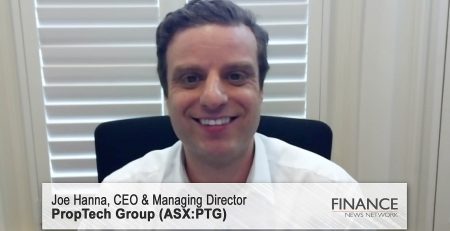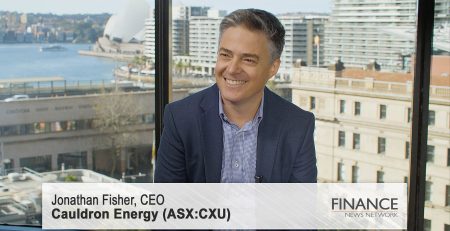North Stawell Minerals (ASX:NSM) discusses gold intercept results
North Stawell Minerals Limited (ASX:NSM) CEO Russell Krause provides an update on the company, discussing recent drilling and outlook.
Melissa Darmawan: Thanks for tuning into Finance News I'm Melissa Darmawan. Gold explorer North Stawell Minerals (ASX:NSM) is focused on the resource-rich region of Stawell in Central Victoria. The company has a highly prospective 550 square kilometres of tenements in the famous Stawell gold mining region, that has seen over 5 million ounces of gold mined. Today, we welcome back the Chief Executive Officer for North Stawell Minerals, Russell Krause. Russell, nice to see you online today.
Russell Krause: Good morning, Mel. Thank you very much for giving me the opportunity to speak to you and your viewers.
Melissa Darmawan: It's great to have you back. Recently, our viewers were first introduced to North Stawell Minerals where you gave a terrific overview of the company and its prospects. Since then, the company has been very active, with what appears to be some good results. Can you take us through the results from Glenorchy and Gready?
Russell Krause: Yes, I can. What we've actually been doing is exploring the Stawell area to the north of the existing Stawell gold mine. As we travel further north, there's a sedimentary cover which covers that area, and it makes it lovely farming land, but it's no outcroppings. So as a consequence, the area has been largely under-explored, so we've put together a fairly big geophysics and geochemistry campaign plan, a lot of gravity work, and done a lot of basic geology and science behind our exploration program, and then what we've done is we've actually commenced drilling. So we've identified a number of targets, basically 20 up and down that corridor, and we are starting to test those individual targets. Glenorchy and Gready are two of the first ones that we have tested, we're using an air core rig, which is a relatively light rig, small environmental footprint. And we're just drilling vertical holes down to the contact.
So through the cover, through that sedimentary layer which is barren as far as the gold is concerned, and then testing those basalt domes that we've identified underneath that cover. So, so far, at both Gready and Glenorchy, what we've uncovered, what we've discovered with the grades that have come back has been gold intercepts, so we're quite encouraged as to what we're actually getting. Whilst those grades are not overly high at this point in time, what they are is indicating that the mineralisation, which we believe continues from Stawell all the way up the corridor is actually there.
Melissa Darmawan: How about the results from Lubeck Tip?
Russell Krause: Lubeck Tip is probably one of the more exciting areas that we've actually discovered now. We're only very early into that program, but what we've actually discovered is that we've got a continuous mineralisation for about 1.5 kilometres of strike so far. So that itself indicates that if that's mineralized similar to the way the Stawell Magdala dam is mineralized, it is potentially a very large deposit. So whilst this is very early days, and we've actually got some nice broad intercepts of gold, we are hopeful that this will hold together and develop into a fairly significant project. So we're very excited about Lubeck Tip.
Melissa Darmawan: That's great to hear. So it does sound like you are happy with the grades you're getting from these early drill sites. Do you have any other colour that you can provide?
Russell Krause: Yes, I think that the real thing is that the broadness of the intercept is the most important thing for us. There's been quite a number of mines discovered with very narrow, small, and relatively low grade intercepts a few meters wide, and might only be one gram a tonne but that's led onto the development into a major structure, so that they're sort of found the start of the lead, and continued on developing and exploring. Lubeck Tip, we've probably encountered five intercepts broader than between five and 15 meters continuous gold bearing, whilst the grades as I'd say is around about one, one and a half grams, what it's indicating to us is that we're actually onto a very large structure, which is exactly what we're trying to find. Our main objective is to try and find a Stawell-like structure, which is a multi-millionaires deposit, and Lubeck is indicating that the potential is there for that. It's difficult for us to get too excited at this stage because it's very early on in the place. That's why I'm trying to be a little bit conservative about what I'm saying, but we are encouraged.
Melissa Darmawan: When do you determine if the site is able or ready to be mined? So in other words, if you find a strong site, do you abandon the other testing and start mining, or do you run through the site program before determining where the mining will begin?
Russell Krause: No, we certainly don't abandon anything. What our intention is, is we have identified a number of major targets up and down the corridor, that Stawell corridor, and I suppose it's important to say we are focused purely on that corridor, that is our objective. So we've identified 20 major targets, and we've tested to this point in time and only likely tested eight of those targets. There's only two of them that, at this point, we've decided that we don't need to put any further work into, and the other six we intend to continue to develop. One in particular, Lubeck, is really looking very, very promising. So our objective will be to continue to test all of those targets and then develop them as we go, and we've got the budget to do it, so we intend to spend the money as we have already outlined.
Melissa Darmawan: Given what we've discussed so far, I can see why you and the team are feeling quite encouraged. What should our viewers and potential investors be looking for in the drilling results moving forward?
Russell Krause: I guess it's probably the narrative around what we say with these results, because what we're trying to do is, as I say, find those multi-millionaires deposits and the mirror image of the Stawell Gold mine. The geological setting indicates that there's a number of those potentially hosted up and down that corridor. So what we're trying to do is… What we'll try and identify is those areas that are potential to host that sort of style of deposit, and we will put the narrative around those results to indicate exactly what we believe we are discovering. What investors should be looking for from us is those big structures, and we will report those as we uncover them, fingers crossed.
Melissa Darmawan: I know that you have two rigs on the site. However, from reading recent updates from other miners, weather conditions and even labour shortages have been a headwind. What are the risks that we need to be aware of?
Russell Krause: I think that the biggest risk for us is really the weather conditions. Obviously, we're on farm land, and we're coming into the Victorian Winter, which is typically wet. As a consequence, on that farm land, I'm not going to be able to move heavy equipment across fields without causing major damage, so we'll simply re-adjust our drilling program, move back to some of the higher areas, place it to store itself, and we'll continue our program and test other targets there, so we'll continue on regardless of weather conditions, by and large. So we've attempted to more or less de-risk our portfolio, and having 550 square kilometres of land, it gives us quite a number of options as to where we go, and having those multiple targets and some of which are closer to Stawell gives us the opportunity to de-risk the program as far as that weather, etcetera, is concerned.
Melissa Darmawan: Okay, how about labour shortages, is that a concern for North Stawell?
Russell Krause: The biggest difficulty we have, obviously, has been, we're on a mining site and COVID. That's caused quite a number of people, particularly with the previous rules, staying away in isolation and all that sort of thing. So that has presented some difficulties, what it has meant is that we've actually had to employ a larger than what's required field crew in order to simply cover those opportunities. So mechanical failures probably being more of a delay than actually labour shortages, and unfortunately where you've got equipment machinery moving, you do get that from time to time, but other than that, we're pretty happy with the way things have been going.
Melissa Darmawan: Last question for me, some of our viewers may not be aware that the Stawell Gold Mine next door has been quite successful. However, they are a private company and their results aren't publicly available, but they are a significant investor in the company. What does this mean for North Stawell Minerals?
Russell Krause: That's a very good question. The Association of the Stawell Gold Mine is probably critical to the success of North Stawell Minerals. We are purely, if you like… Well, I shouldn't, but perhaps I'll just explain the ownership structure a little bit more first. Stawell Gold Mines is owned by a private equity group managed by a Arete Capital Partners. Arete Capital Partners CEO is Mr. Campbell Olson and chairman is Hugh Morgan, the Hugh Morgan of Western Mining firm. So he's a very famous individual in gold mining in Australia. That group, that same private equity group, has a 66% interest in North Stawell Minerals. So effectively, even though we're the listed public face of that group, we are the exploration arm of Stawell Gold Mines. We sit at the Stawell Gold Mine site, we have full access to all of the data at Stawell Gold Mine. So I have, and our team has full access to their geology, and we have access to going underground and actually have a benefit of being able to look at the exact sort of wall bodies that we are trying to do develop and the mines and existing mine processing right now.
So what that means is that there's a gold plant sitting right outside my office here, operating right now as we speak. So if we're successful in finding a major deposit, we will not have to develop the infrastructure other than the appropriate government permitting to actually start mining, and then we got plant here already that we can actually form a process agreement with or an off-target agreement, if you feel like, or a toll treatment arrangement, something along those lines, with Stawell gold mines and process that. So that means is that we can fast track our development probably more quickly than any other junior explorer, so that's fairly significant advantage, having that infrastructure and people around us, and it's like having a big brother. All the gears there, the labs there, everything else is there.
Melissa Darmawan: There you go, Russell Krause. It's been a pleasure talking with you. I look forward to the next update.
Russell Krause: Thank you very much, Mel.
Ends
Copyright 2022 – Finance News Network
Source: Finance News Network

